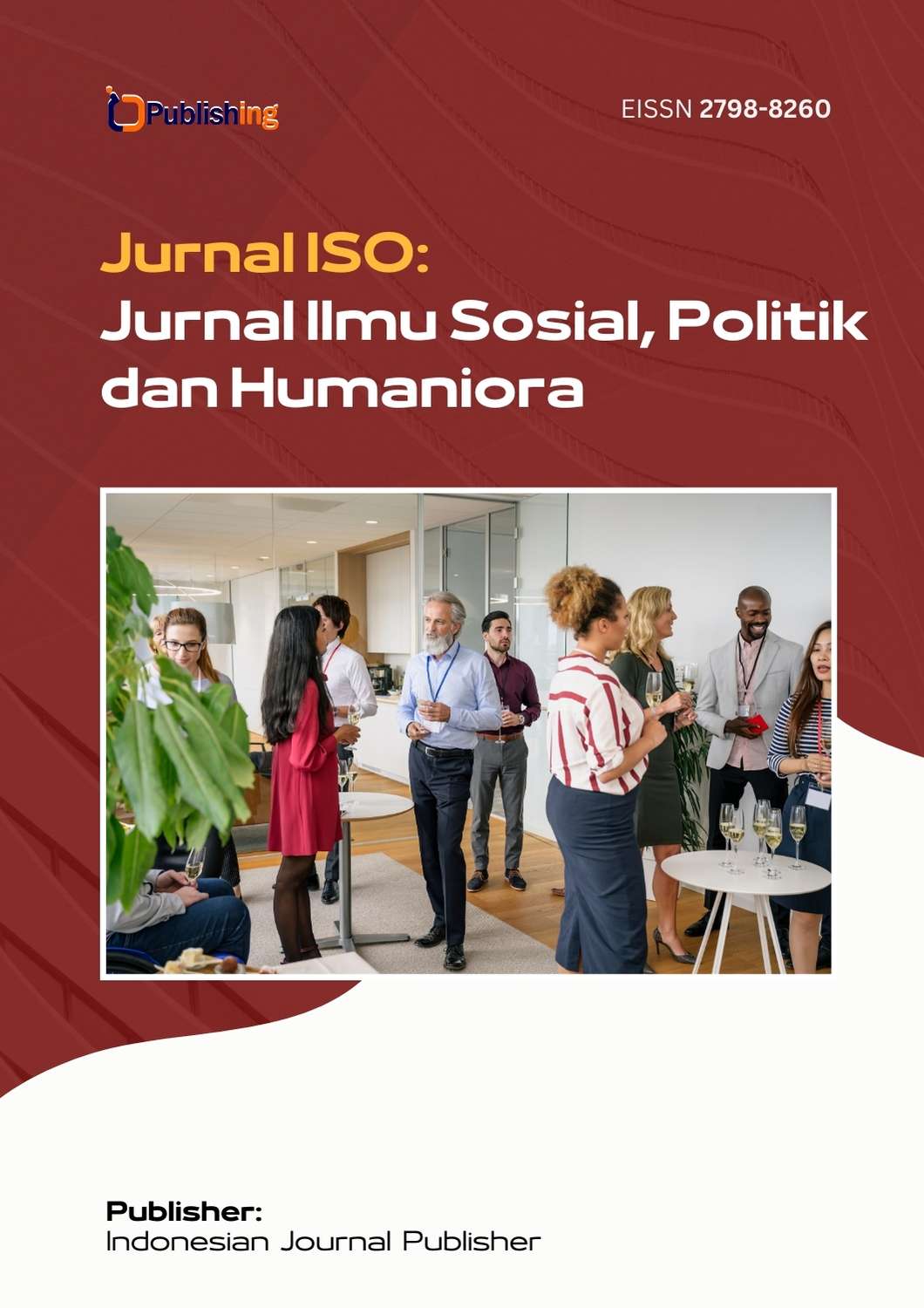Representation of Mental Health Issues in the Movie Not Okay
DOI:
https://doi.org/10.53697/iso.v4i1.1693Keywords:
Mental Health Issues, Non-Verbal Communication, Representation, Verbal CommunicationAbstract
In this study, researchers will discuss the issue of scenes that represent how mental health issues are presented in the film Not Okay. The method in this research is a descriptive study using a qualitative approach. The population of this research is all the characters from the film Not Okay. Danni Sanders, the main character in the film Not Okay, is the subject or sample of the research. Data is collected through cutscene analysis which represents mental health issues through conversations and scenes which will be divided into several categories. Apart from verbal communication, researchers will also analyze non-verbal cues such as facial expressions because they can also be used to convey implied messages. The result of this research is the film "Not Okay" (2022), which succeeded in providing an in-depth and realistic depiction of the complexity of mental health issues. The main characters can encourage viewers to consider the need to recognize and understand mental health issues, as well as how external circumstances and support networks play an important role in the recovery process. As a result, the film is not only entertaining but also makes a significant contribution to increasing awareness and understanding of people facing mental health problems.
References
Adisa, M. P., Larasati, T., & Nafisah, A. (2024). Coping mechanisms and family support to prevent depression in children. Medical Profession Journal of Lampung, 14(3), 495–501.
Andrianto, N., & Alif Fianto, A. Y. (2021). Analisis isi gangguan stress pasca trauma dalam film 27 Steps of May. Communicator Sphere, 1(1), 20–30. https://doi.org/10.55397/cps.v1i1.2
Ardhini, Z. A. (2022). 8 film bertema kesehatan mental, terbaru Kukira Kau Rumah.
Daradjat, Z. (1988). Kesehatan mental.
Dwipayana, N. L. A. M., Setiyono, S., & Pakpahan, H. (2020). Cyberbullying di media sosial. Bhirawa Law Journal, 1(2), 63–70. https://doi.org/10.26905/blj.v1i2.5483
Joelnetan, M., Hadi, I. P., Prodi, D. B., Komunikasi, I., Kristen, U., & Surabaya, P. (2022). Representasi gangguan mental dalam film “The Menu (2022).” Jurnal E-Komunikasi Program Studi Ilmu Komunikasi Universitas Kristen Petra, Surabaya.
Malfasari, E., Leny, M., Febtrina, R., & Zul’irfan, M. (2023). Tindak kekerasan terhadap perkembangan mental emosional remaja. Jurnal Keperawatan Jiwa (JKJ): Persatuan Perawat Nasional Indonesia, 11(2), 455–464.
Maulana, M., & Yulianti. (2023). Representasi visual kesehatan mental pada film Dear David. Bandung Conference Series: Communication Management, 3(2), 595–601. https://doi.org/10.29313/bcscm.v3i2.7593
Miller, C. E., Townsend, M. L., Day, N. J. S., & Grenyer, B. F. S. (2020). Measuring the shadows: A systematic review of chronic emptiness in borderline personality disorder. PLoS ONE, 15(7), e0233970. https://doi.org/10.1371/journal.pone.0233970
Miller, C. E., Townsend, M. L., & Grenyer, B. F. S. (2021). Understanding chronic feelings of emptiness in borderline personality disorder: A qualitative study. Borderline Personality Disorder and Emotion Dysregulation, 8(1), 1–9. https://doi.org/10.1186/s40479-021-00164-8
Nasirin, C., & Pithaloka, D. (2022). Analisis semiotika konsep kekerasan dalam film The Raid 2: Berandal. Journal of Discourse and Media Research, 1(1), 28–43. https://journal.rc-communication.com/index.php/JDMR/article/download/14/18
Nelma, H. (2022). Gambaran strategi coping pada profesional kesehatan mental. Jurnal Psikologi Pendidikan Dan Pengembangan SDM, 11(1), 12–22. https://ejournal.borobudur.ac.id/index.php/psikologi/article/view/940/842
Pertiwi, M. N., & Ulandari, V. W. (2023). Hubungan antara stres dengan kejadian emotional eating pada pekerja yang melanjutkan pendidikan ekstensi. SEHATMAS: Jurnal Ilmiah Kesehatan Masyarakat, 2(1), 251–259. https://doi.org/10.55123/sehatmas.v2i1.1351
Puspita, V. D., & Kustanti, E. R. (2019). Hubungan antara dukungan sosial teman sebaya dengan perundungan pada siswa SMP PL Domenico Savio Semarang. Jurnal Empati, 7(4), 252–259. https://ejournal3.undip.ac.id/index.php/empati/article/view/23458/21418
Rahmanishati, W., & Dewi, R. (2021). Hubungan dukungan sosial dengan post traumatic syndrome disorder (PTSD) pada korban bencana tanah longsor di Desa Sirnaresmi Kecamatan Cisolok Kabupaten Sukabumi. Journal Health Society, 10(1), 1–12.
Riwu, A., & Pujiati, T. (2018). Analisis semiotika Roland Barthes pada film 3 Dara (kajian semiotika). Deiksis, 10(3), 212. https://doi.org/10.30998/deiksis.v10i03.2809
Rizaty, M. A. (2022). Survei: 1 dari 3 remaja Indonesia punya masalah kesehatan mental. https://dataindonesia.id/ragam/detail/survei-1-dari-3-remaja-indonesia-punya-masalah-kesehatan-mental
Sarni, F., Muarifuddin, M., & Gultom, E. (2021). The representation of mental illness in the movie “Ma.” ELITE: Journal of English Language and Literature, 4(2), 202–211. https://doi.org/10.33772/elite.v4i2.1297
Sobur, A. (2004). Semiotika komunikasi. PT Remaja Rosdakarya.
Ulfah, E. (2021). Peran keluarga terhadap kesehatan mental remaja di masa pandemi. PSISULA: Prosiding Berkala Psikologi, 3(November), 14–23.
Downloads
Published
How to Cite
Issue
Section
License
Copyright (c) 2024 Nasya Fairuzya Ramadhani, Yudha Wirawanda

This work is licensed under a Creative Commons Attribution-ShareAlike 4.0 International License.













